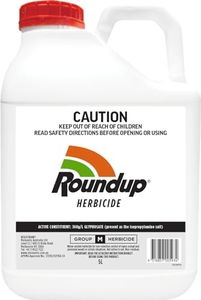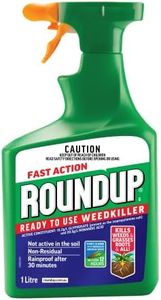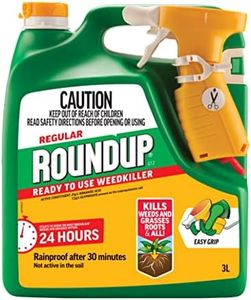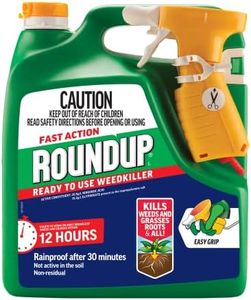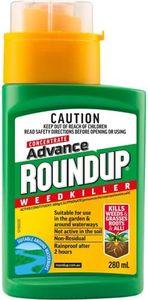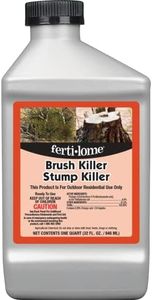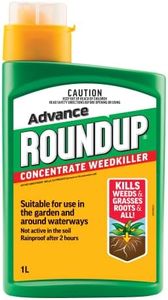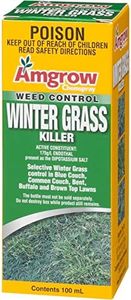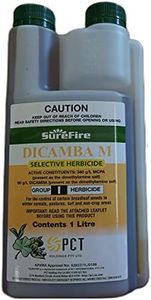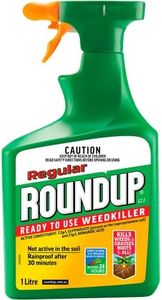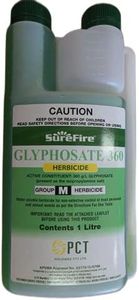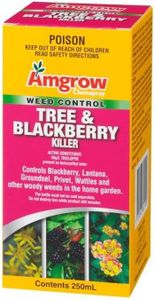We Use CookiesWe use cookies to enhance the security, performance,
functionality and for analytical and promotional activities. By continuing to browse this site you
are agreeing to our privacy policy
10 Best Vegetation Killer
From leading brands and best sellers available on the web.Buying Guide for the Best Vegetation Killer
Choosing the right vegetation killer (also known as weed killer or herbicide) can make a big difference in maintaining your garden, lawn, or land free from unwanted plants. Before making a decision, you should consider where and how you intend to use it, the types of plants you want to eliminate, and whether you want a short-term or long-lasting solution. Understanding the main specifications will help you select a formula that’s effective but safe for your intended purpose and environment.Type (Selective vs. Non-Selective)This specification refers to whether the vegetation killer targets only certain plants (selective) or kills all plants it contacts (non-selective). Selective killers are ideal if you want to remove weeds without harming grass or other specific plants, making them suitable for lawns or garden beds. Non-selective versions kill any vegetation they touch and are better for clearing driveways, sidewalks, or areas where you don’t want anything growing. To choose the right type, consider whether you need widespread clearance or targeted weed control.
Persistence (Residual vs. Non-Residual)Persistence describes how long the weed killer remains active in the soil. Residual products provide long-lasting weed prevention in an area, but they can also prevent desired plants from growing for months. Non-residual products break down quickly and allow for replanting sooner but may require more frequent applications. Decide based on if you want long-term prevention or the flexibility to replant soon after application.
Systemic vs. Contact ActionSystemic herbicides are absorbed and transported throughout the whole plant, killing it from the roots up. Contact herbicides kill only the plant parts they touch, usually leaves and stems, and are best for young or small weeds. If the weeds have deep or well-established roots, a systemic option is usually more effective. For rapid results on annual weeds, a contact product may suffice.
Application MethodVegetation killers come in different forms, such as ready-to-use sprays, concentrates that need to be mixed, or granules that are spread and watered in. Sprays are convenient for small or targeted areas, concentrates can be more economical for larger areas but require mixing, and granules are easy to apply over broad spaces. Choose the method that matches your comfort level and the size of the area you’re treating.
Rainfast TimeRainfast time refers to how long after application the product needs to remain dry to be effective. Products with a short rainfast time are less likely to wash away if rain follows soon after you spray. If you live in an area with unpredictable weather or need quick results, this could be an important factor in your selection.
Safety and Environmental ImpactIt’s important to think about the effects the product may have on people, pets, water sources, and surrounding plants. Some formulas are safer around children and animals or break down quickly to minimize environmental impact. If safety and environmental health are priorities for you, look for natural or low-toxicity options and always follow label instructions carefully.
